Lechonk: Design & Concept
This page covers Lechonk's design, concept, and name origins. This information is speculative because the Pokémon company has never officially stated what Lechonk is based on.
Concept
Lechonk is clearly based on a wild pig, most likely on a Black Iberian Pig. These pigs are native to Spain (the country Paldea is based on), have black fur, a large appetite, and consume a diet primarily of fruits and nuts. And, like most pigs, they have a tendency to be obese (unless under proper dietary care) because it is very easy for them to store fat. All of these inspirations and aspects can be seen within Lechonk.
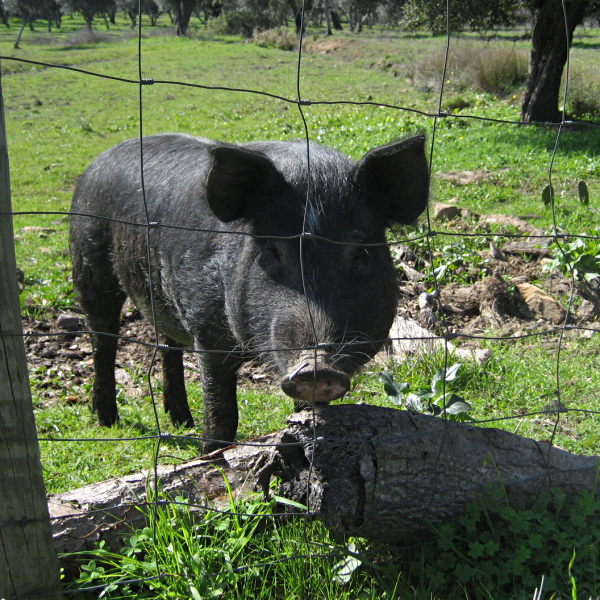
Image from Wikipedia
There's also possible inspiration from Truffle Hogs; hogs that are trained to sniff out rare delicacies like truffles and dig them out of the ground. Lechonk is often called a "gourmand" who sniffs around for the finest of foods. Pigs have a natural inclination to root in the earth for food (Lechonk can learn the move Dig by level-up), and they have an accute sense of smell (just like Lechonk!)
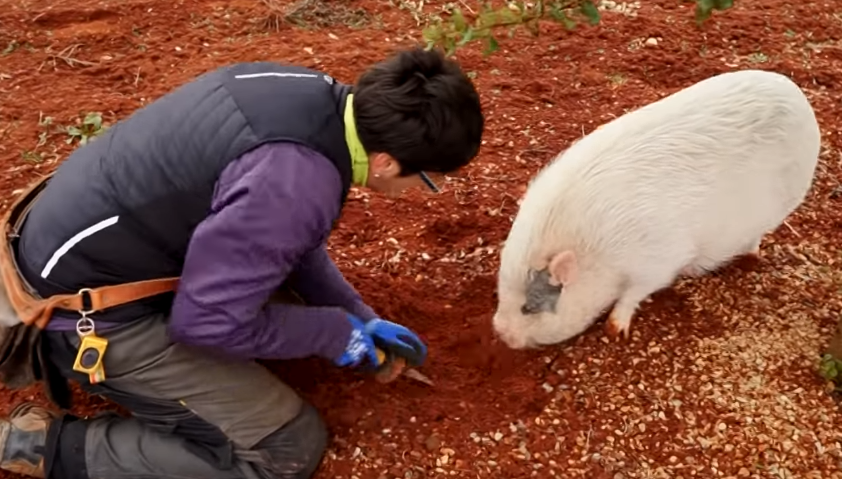
Image from this video: Truffle Hunting Pig
Design
Onto the design! With this inspiration in mind, the design team set out to create a cute normal type pig Pokémon to be found early in the game. It needed to be approachable, unassuming, and friendly. And, like all good Pokémon, a balance of looking like it could fight AND be your friend; and they nailed it.
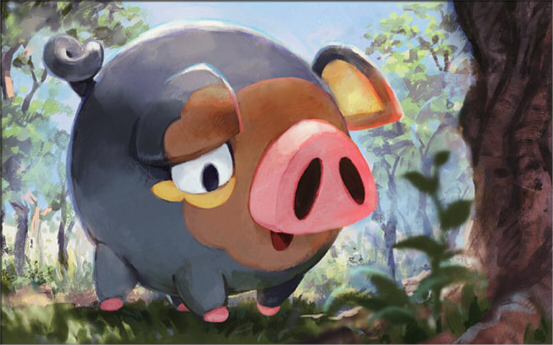
Illustration by teeziro
Lechonk is easily one of my favorite designs in the Pokémon series. There is just something so charming about it! ♥ The floppy round ears, the stubby little legs, the bright big pink nose... and, of course, his rotund physique. It's no wonder he became an internet meme sensation after his debut.
One of my favorite things about Lechonk's design is the personality and character it has. I think this is what I find so charming about it; all good Pokémon designs display a clear and engaging personality. It is what makes us feel like we can befriend them! By just looking at Lechonk's design, you can see that he is a timid and docile Pokémon, but that he also has power and strength.
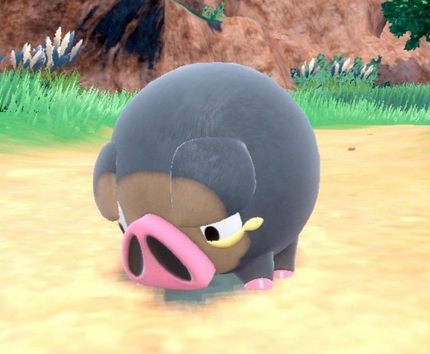
Screenshot from Pokémon Scarlet & Violet
The timid personality is conveyed through his ears covering part of his eyes; it makes him feel shy. The brown-black color palette is very grounded, with warm hues like pink and yellow drawing in a friendly and playful nature. You can tell he has power because of his bulky body shape!
Lechonk also envokes personality through shape language; its most prominent shape is its circle body! Circular shapes are used in character design to communicate friendliness and make a character feel approachable. That's perfect for a fairly weak, early-stage Pokémon you find at the start of your adventure. His triangle nose is also very rounded on the edges, so it still keeps the soft look. His ears and teardrop markings have sharp points at the end which gives us nice contrast.
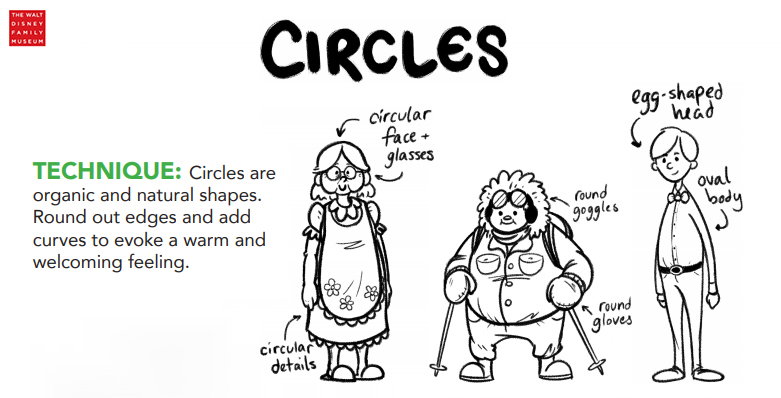
Image from The Walt Disney Family Museum
Name
Lechonk's name is a combination of:
- Lechon: "Piglet" in Spanish / a Spanish dish called "suckling pig"
- Chonk: Internet slang for fat or chunky
The novelty and charm of Lechonk's name is one of its main qualities that captured the hearts of fans. It's certainly something I love about the little guy! The fact they seamlessly incorporated the word "chonk" into an official Pokémon name is so funny to me, haha. He is a chonky boi
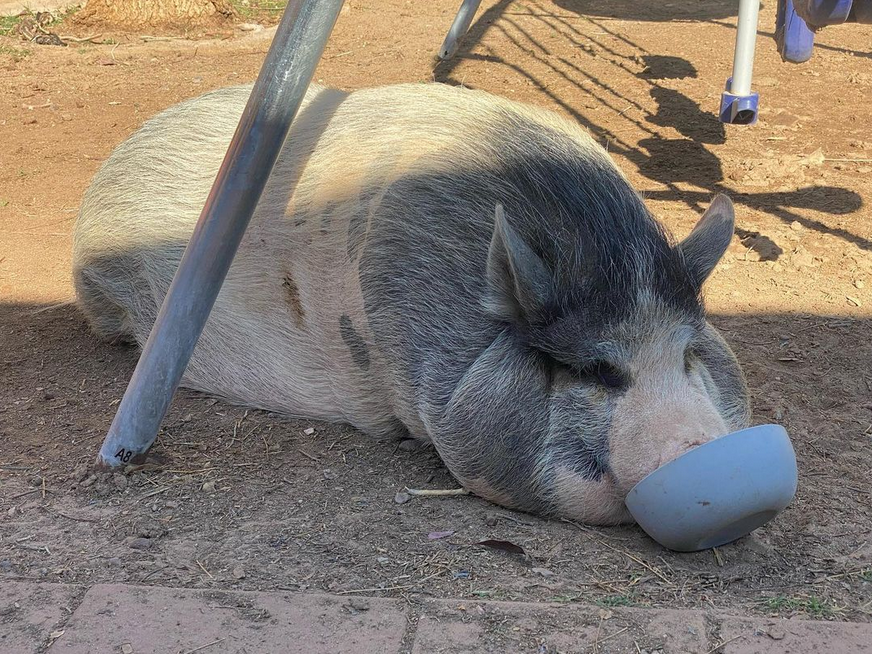
Image from penny_the_pidoublegy on Instagram
As a huge lover of pigs, I was also relieved to know that "Lechon" doesn't exclusively refer to a roasted piglet dish; it can also be used to refer to a regular little piglet! While I know the dish is the most likely inspiration, in my heart the "Lechon" part of Lechonk's name will mean baby pig. (The dish just breaks my heart too much!)
Here are Lechonk's names in different languages:
- Japanese: グルトン (Gourton)
Gourmet + Glutton + 豚 ton (pig) - French: Gourmelet
Gourmet + Porcelet (piglet) - German: Ferkuli
Ferkel (pig) + Kulinarisch (cullinary) - Korean: 맛보돈 (Matbodon)
맛보다 matboda (to taste) + 돈 (豚) don (pig)